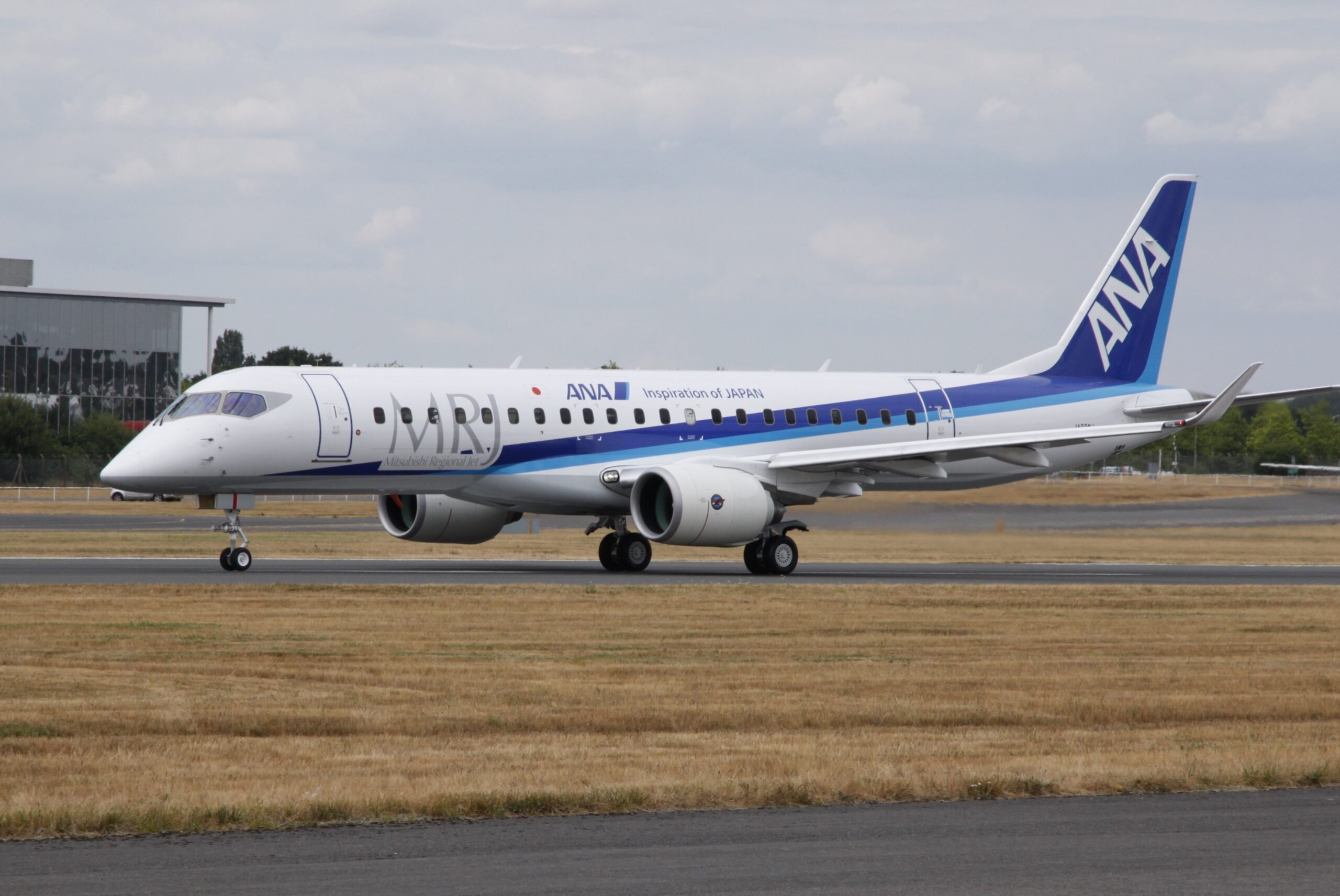
News from Japan a few minutes ago says Mitsubishi Heavy Industries is shutting down the development of the SpaceJet. The decision is expected to be announced on Tuesday when MHI presents its FY22 results. Termination of the program, which has been anticipated since 2021, means fifteen years and $7.6Bn lost. MHI states it still has 270 orders.
This is some loss of face. MHI was not new to the aircraft business and remains a key Boeing supplier. The SpaceJet, born as the Mitsubishi Regional Jet (MRJ), was a neat aircraft and the model shown at the airshows demonstrated excellent quality in construction. Moreover, recall this was the aircraft that launched Pratt & Whitney’s GTF. There was some promise here.
But the uncertainty of the program was reflected from the start – witness this 2015 chat. The program hit hurdle after hurdle. While it is easy to be critical looking back, there were some obvious missteps. The most obvious was focusing on the wrong size models – Mitsubishi would have been so much better off focusing on the same segments as Embraer. If Mitsubishi has focused on offering an alternative to the E190 and E195, things could have turned out so differently.
The idea of getting the MRJ to fit inside the Scope Clause was the wrong priority. Embraer also bet that Scope would move and its E175-E2 is dead in the water. This is unfortunate because US regionals could benefit from improved technologies. But given the pilot shortage that has given pilots an almost unassailable hold over management, what can one do? Embraer and Mitsubishi took the wrong bet on US regionals.
Had Mitsubishi focused on the 100-125 seat segment, that program may well have picked up more momentum. The larger MRJ90 had 86 orders and the OEM might have built on this. In the end, the OEM built a museum for the aircraft before flight tests were complete. Mitsubishi already fully impaired all costs and assets related to SpaceJet – as the program was rebranded in 2019 – in its 2021 financial statements, as became apparent in September 2022.
Now we are in an era of incrementalism. improvements will be coming from marginal tweaks rather than fresh designs and ideas. And it is rather sad because aerospace is by nature a pioneering activity, where pushing barriers is the norm. Or it was.




